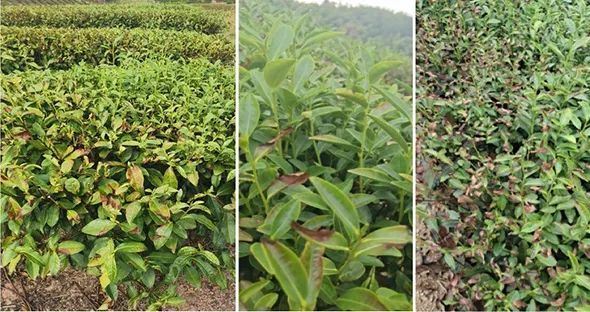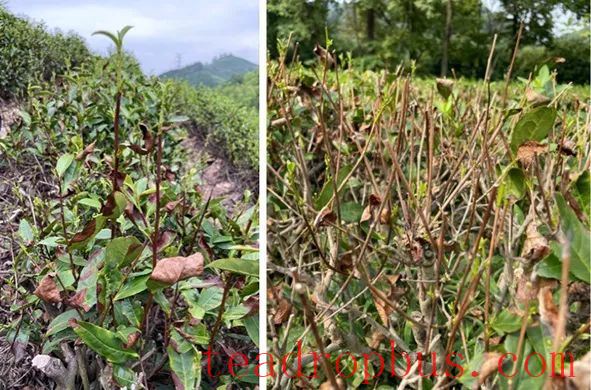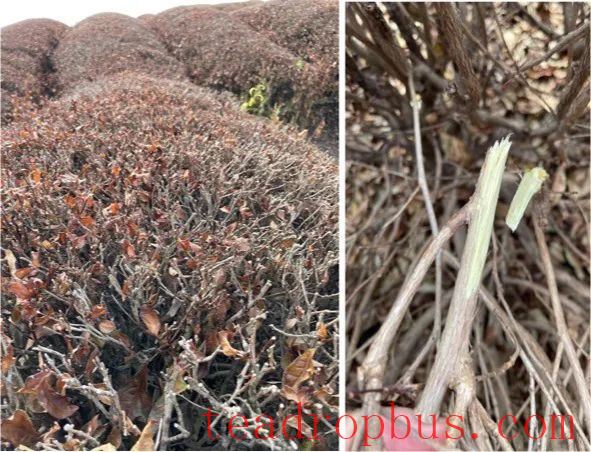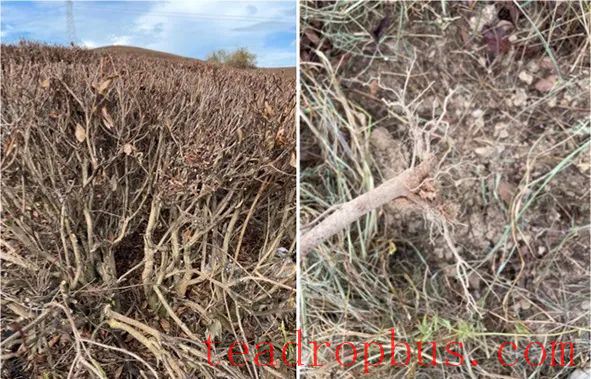Following the extreme high temperature and drought climate disasters that affected major Tea-producing areas across the country, especially Zhejiang, in 2013, these regions—including Zhejiang, Hubei, Fujian, and Jiangxi provinces—once again suffered from extensive and prolonged extreme high temperature and drought in 2025, causing significant harm to tea gardens.
1. Grading the Severity of Damage to Tea Plants Based on previous research, we have divided the severity of damage to tea gardens after exposure to high temperatures and drought into four levels: light, moderate, severe, and extreme. This grading provides a basis for assessing the extent of damage to tea gardens and implementing targeted post-disaster recovery measures.
2. Symptoms and Grading of Damage Caused by High Temperature and Drought Symptoms of damage to tea plants caused by high temperature and drought typically include stunted growth of new shoots, withering and scorching of young stems and leaves, wilting and shedding of mature leaves, and the appearance of scorched edges and spots on the surface layer of mature leaves on the canopy. These symptoms then spread inward and downward through the Leaf, causing branches and leaves to gradually wither and die, sometimes leading to the complete death of entire branches. Typically, mature leaves are affected before older ones, leaves before tender shoots at the top, and above-ground parts before underground parts.
The severity of damage can be categorized into four levels based on the different symptoms displayed by tea plants after exposure to high temperatures and drought:
1. Light Damage is primarily characterized by some leaves gradually turning yellow-green, developing brown spots, scorched edges, mild curling, and deformation.

Light symptoms of damage caused by high temperature and drought in tea plants (Image source: Zhou Xiaofen, left)
2. Moderate Damage is mainly manifested by the majority of mature leaves turning reddish-brown, wilting, scorching, and shedding, while the top buds and shoots remain unharmed or only partially damaged.

Moderate symptoms of damage caused by high temperature and drought in tea plants
3. Severe Damage is characterized by both old and young leaves becoming scorched and shedding, with bare branches forming at the upper part of the canopy. Most branches are dead, but the main trunk in the middle and lower parts is not completely dead.

Severe symptoms of damage caused by high temperature and drought in tea plants
4. Extreme Damage is characterized by overall water deficiency in the tea plant, complete shedding of leaves, and the death of side branches and the main trunk in the canopy, along with partial root death. If conditions persist for too long, the entire tea plant will die.

Extreme symptoms of damage caused by high temperature and drought in tea plants
When tea gardens suffer from high temperature and drought, accurately assessing the severity of damage to the tea plants is essential for implementing targeted post-disaster recovery measures to help the plants recover as quickly as possible. In the next section, we will introduce specific recovery measures for tea plants under different levels of high temperature and drought damage.